I suspect this post will interest about twelve people? But here goes.
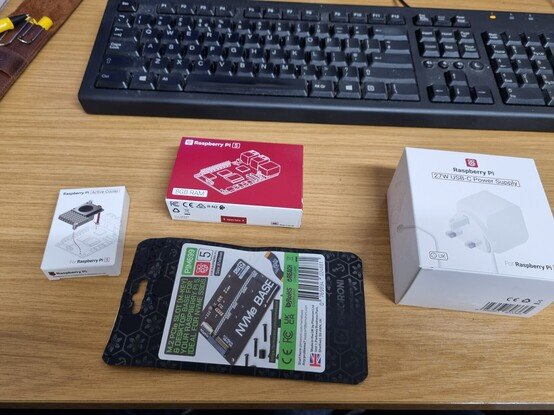
A few months ago, one of my favourite online shops for Raspberrypi stuff Pimoroni announced the release of a single NVMe baseboard. You've lost me already, Pete; what's NVMe? Check out this link All you really need to know about NVMe is it's the latest craze in storage devices, or, to put it in terms you might understand, it's a hard drive. Usually, with a Pi (I'll refer to the Raspberry Pi as simply Pi from now on.), you would use a Micro SD card, the sort of thing you might use in your mobile or tablet to extend the amount of storage, again, think 'Hard Drive'. While you can still use your Pi as most people do by booting off and running from the Micro SD card and maybe using the NVMe as extra storage with the NVMe Base, it offers you the opportunity to install the Pi OS (Operating System) on the NVMe and boot from that instead of the Micro SD card. The benefit is that NVMe is way faster than SD, thus making your little Pi a usable alternative to some mainstream computers.
There are a couple of jobs you will need to do before putting everything together. First, you will need to use something like Pi Imager and write Raspbian, for example, to the Micro SD card to boot up the Pi because you will need to change the boot order to NVMe in the boot configuration. You will also need to write Raspbian or whatever OS you plan to use to the NVMe. Once all that is done, you won't need the Micro SD card again (Hopefully.)

Putting it together is pretty straightforward. The only word of warning is: Be careful with the ribbon; these things are easily damaged if you have gorilla fingers.
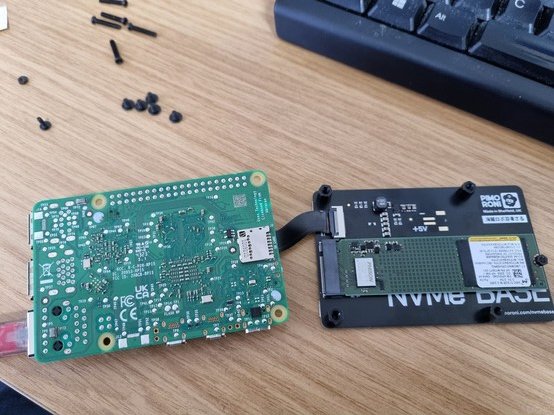
Pimoroni has even considered novices and printed the ribbon so that you are certain of getting it the right way around and connecting the right end to the right device! 💯
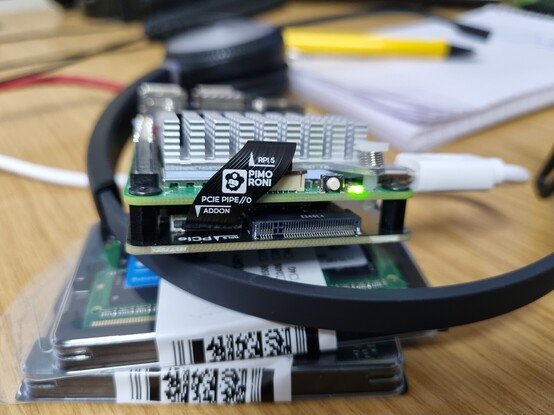
I generally SSH into my Pi's. I do have one or two with 'Desktop' installed, but mostly, I use what is known as Headless, which means there is text only.
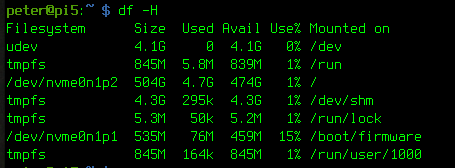
They're determined to see me penniless!
Last month, Pimoroni announced that after the success of their single-board NVMe Base, they intend to release a Duo board. Aaaarrrrgggghhhh!
Why couldn't they have said? I would have waited and saved some money!
"Umm? Aren't you in sales, Pete? Why would you tell people you've got something better coming, which would mean nobody would purchase the current product?" Nobody likes a smart arse.
Now, I could have saved £78.00 and not bought another Pi 5, but it's an utter pain to keep taking these things apart, so I bit the bullet and ordered.

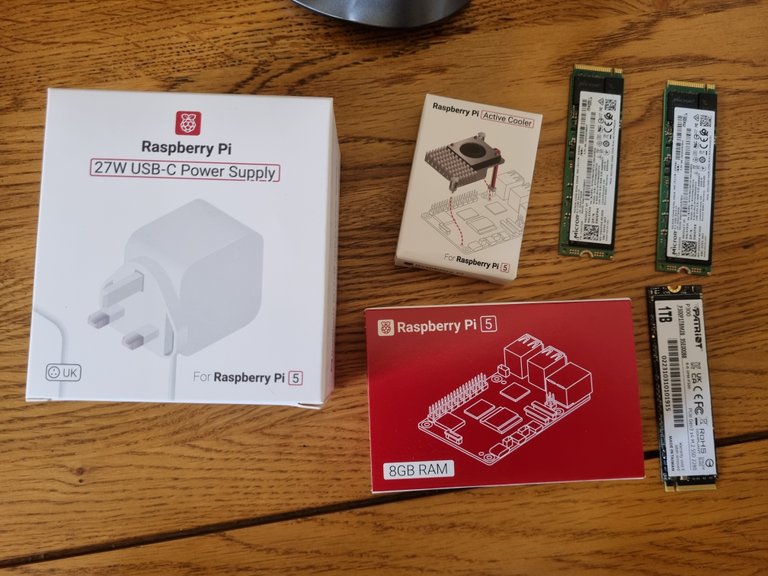
This could be a cheap NAS?
I'm lucky to work for an IT solutions provider, and my employer allows me to buy through the company. I was planning on getting a couple of 2TB NVMe sticks at £81.00 each. All told, that would make the Pi NAS around just under £200, which TBF isn't cheap at all! One of my Directors (I have two) said: "Hang fire, Pete, I've ordered some 4TB NVMe from eBay @ £39.00 each. If they're OK, that would be cheaper for you."
Thirty-nine quid! Are you having a laugh? Thirty-nine quid! They've got to be fakes? I wonder If they're pretending to be 4TB? You can get devices to misreport themselves through firmware trickery, i.e., a 64GB device proclaiming to be 4TB.
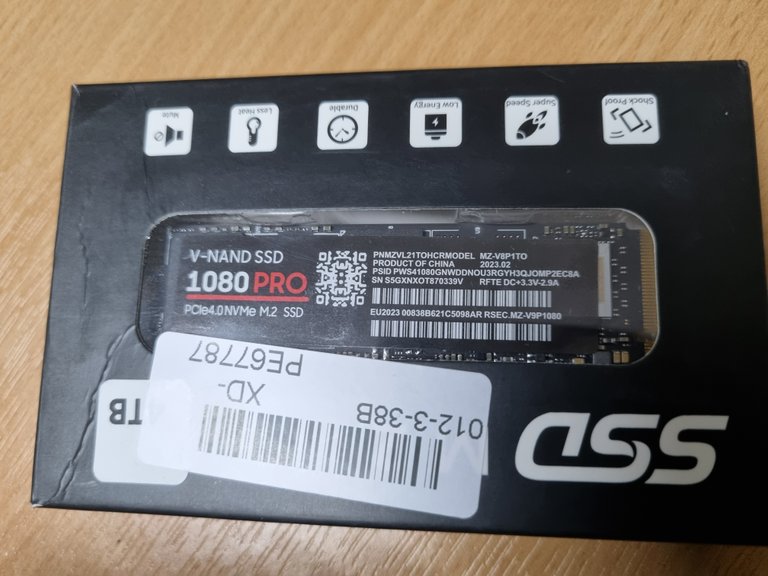
The following day, the two 4TB NVMe turned up. As you would expect, they're from China and sold through eBay. I decided to check them out on my Linux laptop and ran them through Gparted, and yes, they reported as being 4TB. 🤷♂️
They're not mine and are already earmarked for a job, so that I couldn't do any heavy load tests with them. My main concern is heat. NVMe has one Achilles heel; they generally die if they get too hot, and at £39, I refuse to believe the chips, etc., on the board will be of the highest quality. Having said that, I agreed to buy two of them, although I'll have to wait a couple of weeks to get my hands on them. In the meantime, I have some NVMe (256GB) knocking around at work, so I nabbed them to play with at home, putting the Duo Base together.
STOP! You don't know what you are doing!
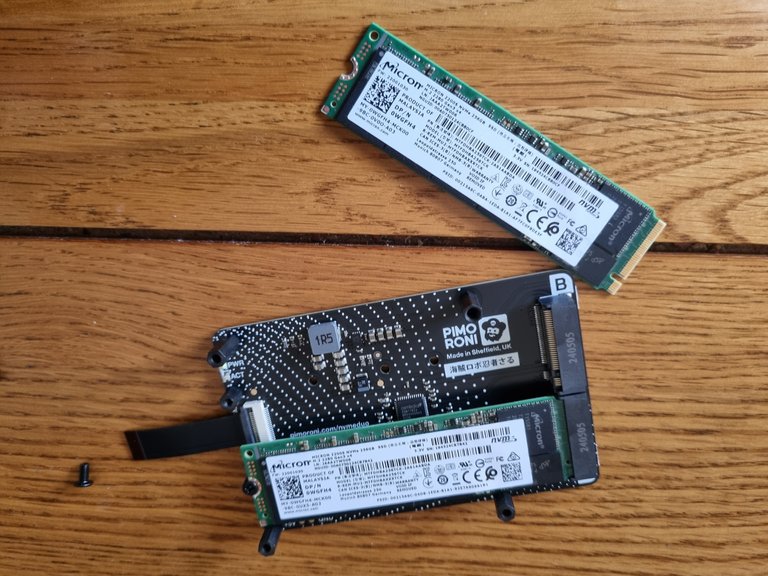
Mistake Number 1
Having put the single board together, Pete blazed into putting the Duo together. I screwed the two NVMe into place, Oh! Bum! I can't attach the ribbon! The NVMe cover the ribbon lockplate! I undid the two NVMe, attached one end of the ribbon, and reattached the NVMe.
Mistake Number 2
This will be different from the single-board in that I won't install the OS on the NVMe as they are going to be Mirrored Storage, so I will use a Micro SD card for the OS. I intended to use Open Media Vault. I'd already got Raspbian on a 16GB Micro SD card, but luckily read through this install guide and discovered OMV (I will refer to Openmediavault as OMV from now on) will not install on a Desktop environment and so had to rewrite the SD card with Raspbian-Lite.
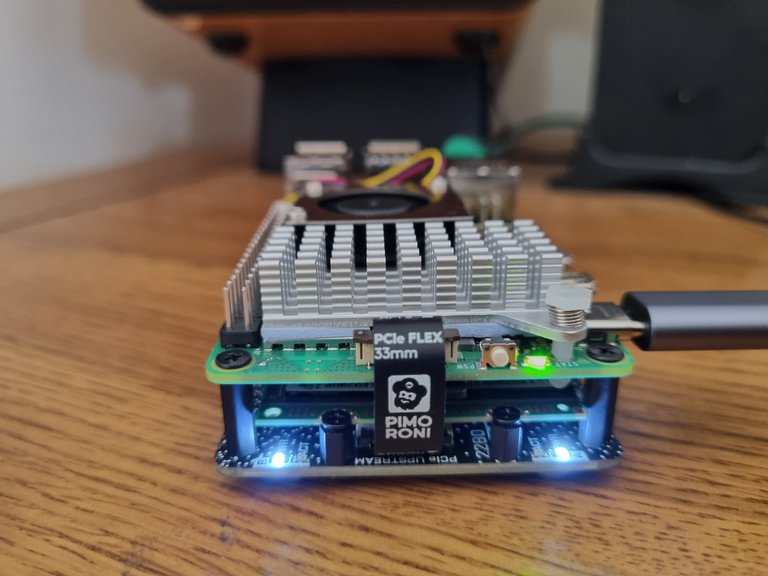
Prior to installing, I did all the usual stuff you do with a fresh install. I ran
sudo raspi-config
And expanded the file system to include all of the available space on the SD card.
Then, updated everything with the following command:
sudo apt-get update && sudo apt-get upgrade -y
I did a quick check with a command to make sure the Pi saw the two NVMe.
lsblk

It was now time to install OMV.
wget -O - https://github.com/OpenMediaVault-Plugin-Developers/installScript/raw/master/install | sudo bash
It takes a while to install everything, and if it reboots, you will lose SSH connectivity, so I advise leaving it alone for at least forty minutes to let it finish. In my case, it rebooted at the end, so when I attempted to access OMV via a web browser 192.168.1.x, I was presented with a login screen.

Next, we need to create the storage type we want. I could have created a RAID from the Pi OS but chose instead to use the OMV ZFS. ZFS is not installed by default, so you will need to go to plugins via the OMV console to install it. It's not rocket science.
Step 1 Create a Pool. Selecting (In my case) both NVMe.
Step 2 Create a File system.
Step 3 Create a Share
Don't forget to enable 'Workgroup' in SMB/CIFS and set your permission correctly in 'Shares'
Some observations
The Duo Base sits slightly higher than the single board base.
There's only one case for the single base at the moment, so you've no chance of an enclosure for the Duo for the time being.
The ribbon obscures the SD card holder, so if you were hoping to swap that out or even maybe one of the NVMe boards without taking it all apart, I'm afraid you're going to be disappointed.
HEAT The Raspberry Pi 5 is hot even with the Active Cooler, and with two NVMe boards, the whole device is a tad warm, to say the least. Monitoring the heat sensors through OMV, the CPU and drives seem to sit at a toastie 48-55C I'd hate to think what that would rise to if you decided to stream a movie from it or uploaded fifty-seven 60GB ISO's to it?
I'm not sure if it's a viable alternative to, say, QNAP as a storage device. I turn it off after playing with it because of the heat issue, and what's the point of having a NAS that you keep turning off? The whole idea is to have your 'stuff' available on demand. 🤷
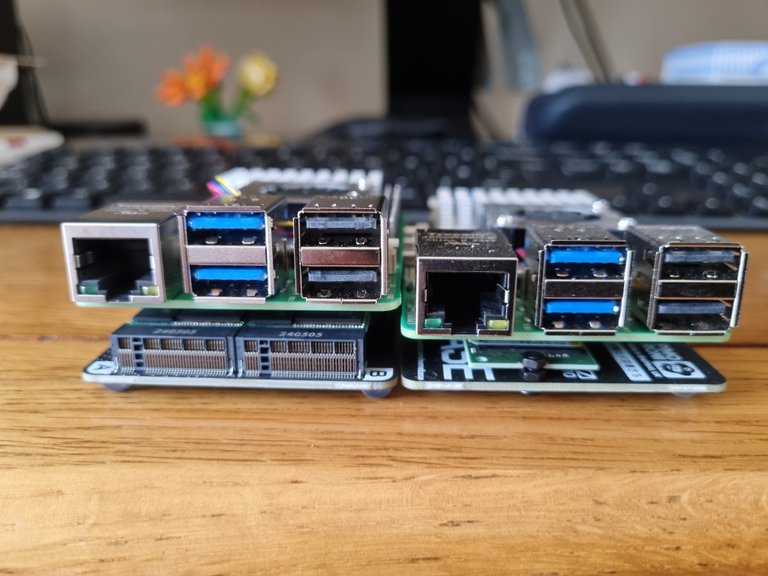


Image created by irisworld
My actual name is Pete. Here is why I have the username dickturpin.
You can also find me on Social Media
 |
https://mastodon.org.uk/@dick_turpin |
 |
https://castlecannon.house/profile/dick_turpin |

|
https://twitter.com/dick_turpin |
 |
https://www.facebook.com/peter.cannon3 |
This work is licensed under a Creative Commons Attribution 4.0 International License.
License explained: ExamplesCreate your license: Choose
Podcaster. FOSS, Linux & Creative Commons Advocate.
"Be who you are and say what you feel because those who mind don't matter and those who matter don't mind."
